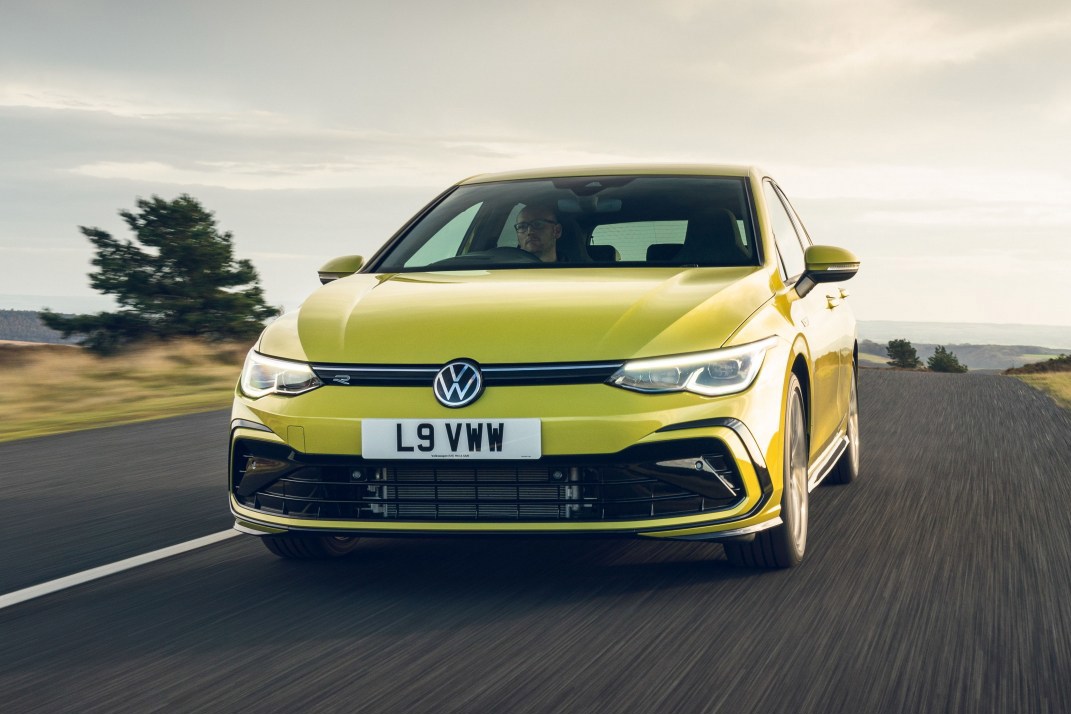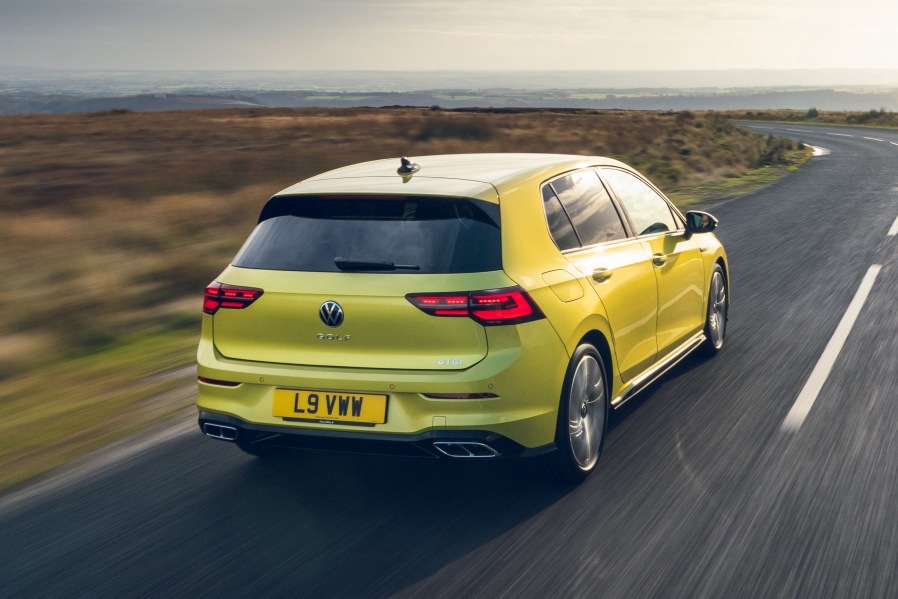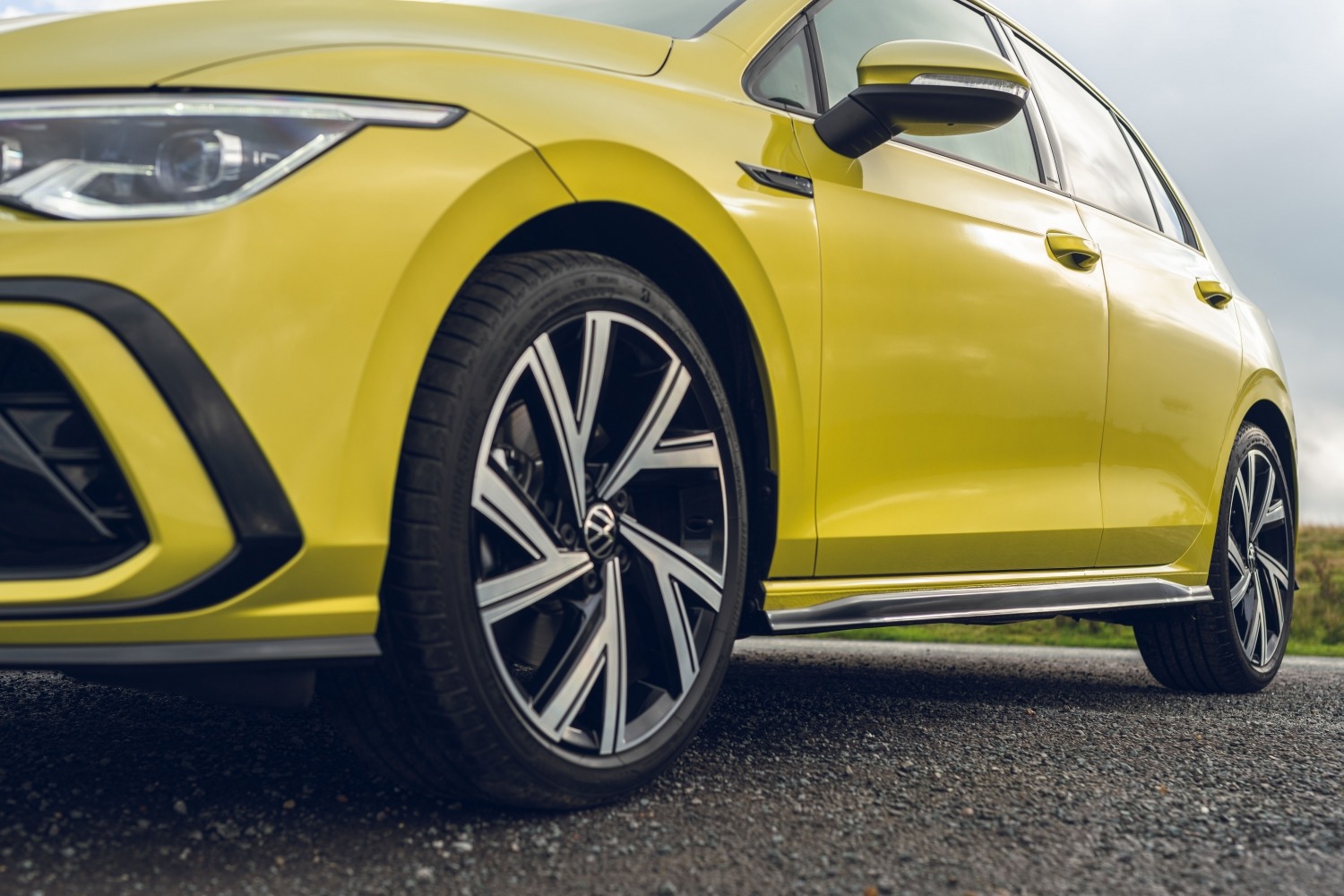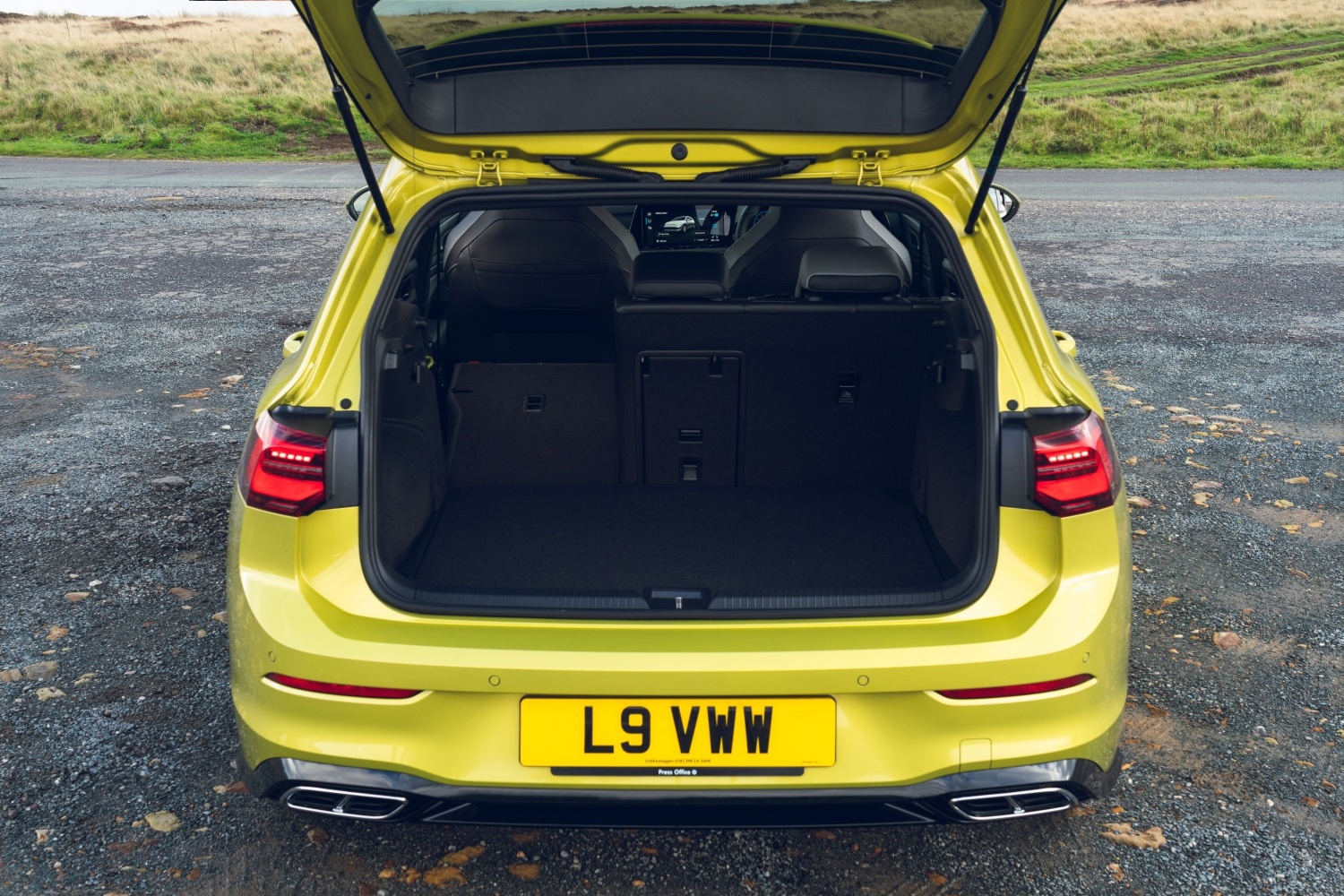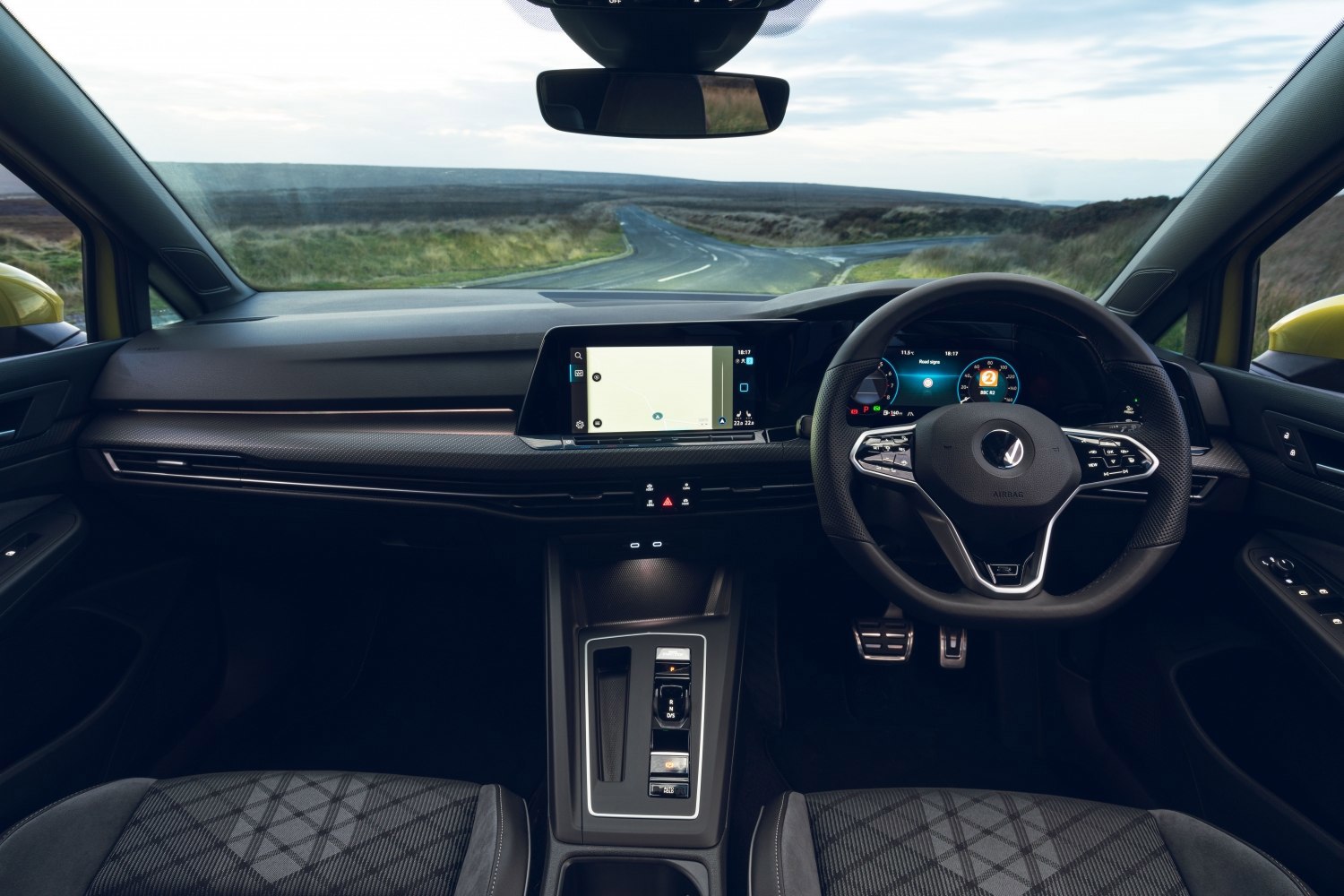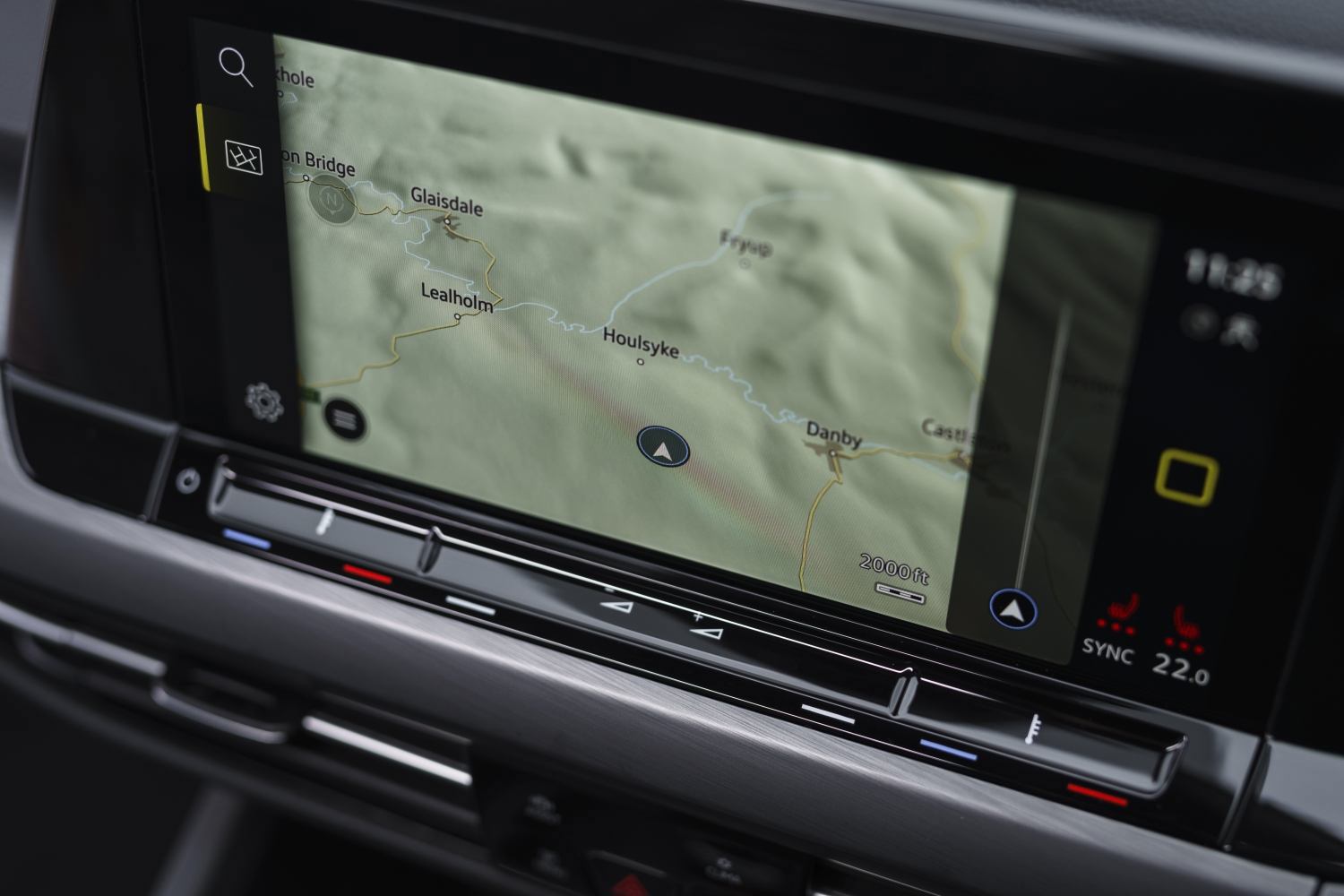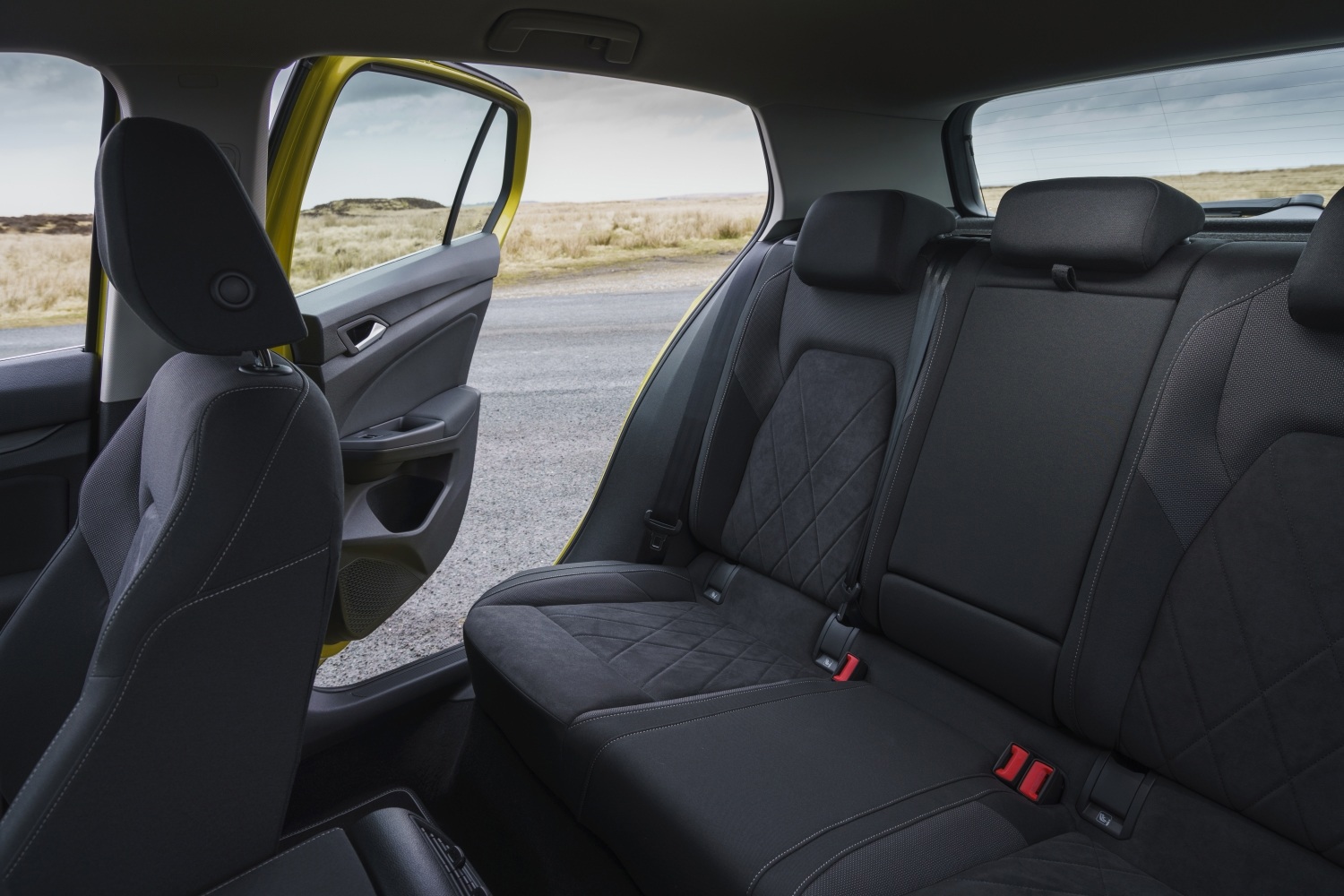Quick overview
- Refinement
- Superb driving position
- Wide range of engines
- Hybrid model’s battery-only range
- Rear seat space
- Cabin not as good as older models
- Fiddly infotainment system
- Pricier than rivals
Whichever way you look at it, the Volkswagen Golf is one of the most important cars ever made. For starters, more than 35 million have been sold worldwide, exceeding even the Beetle, and it’s now into its eighth generation. The fact the Golf has been one of the best cars in its class throughout its long history also tells you a great deal about how it was conceived and how it’s evolved.
Evolution is an important word in the Golf’s development as it’s a car that has avoided ever being too radical or different. Rather than shock potential buyers with something all-new, such as Ford did with the first Focus or Mercedes with the original A-Class, VW has gently updated and honed the Golf to the current car you can buy now.
As such, the present day Golf is the essence of what a small hatch should be according to Volkswagen. From the outside, there’s no mistaking it for anything other than a Golf, even when this car shares much of its mechanical and underbody parts with the Audi A3, SEAT Leon and Skoda Octavia among others in the VW Group. And even if you choose the faster GTI or R models, there’s something enjoyably class-less about the Golf, so it truly lives up to the company name.
On the inside, the latest Golf moves its game on by doing away with most of the buttons you expect to see. In their place are touch-sensitive panels and a large infotainment screen. Not everyone is a fan, but there’s no doubting the quality of materials used inside the Golf that impart a sense of wellbeing in its driver and occupants.
As for power, there’s everything from frugal to fast, petrol to plug-in hybrid, showing the Golf continues to move with the times.
Prices
Volkswagen could have coined the ‘reassuringly expensive’ tag for the Golf. It is more expensive to buy outright than most of its mainstream rivals, though this is offset to a large extent for lease deals thanks to the VW’s strong residual values. Compare the Golf to more premium small hatches from brands such as Audi, BMW and Mercedes, and it begins to look much better value, so the Golf occupies the middle ground between mainstream and upmarket.
The range starts at £24,430 for the Life model and progresses through the Active, Style and R-Line trims. For those seeking a bit of sporting prowess in their life, the petrol-powered GTI gets out of the blocks at £34,940, while the plug-in hybrid GTE costs from £37,520. Other variations on the sporting theme come in the shape of the diesel-powered GTD from £34,230 or the petrol-only GTI Clubsport for £38,760. The ultimate in quick Golfs is the R, which has a list price of £40,900.
There is also the Golf Estate that costs £25,740 and comes in Active, Style, R-Line and the four-wheel drive Alltrack version.
While the Golf is more expensive than most of its main rivals, it doesn’t mean there are not discounts to be had. Whether you prefer to do this in person or through a third-party broker, it’s possible to save around £1500 on the list price of most Golf models, which brings their prices into line with the majority of the VW’s competitors’.
If buying new is not an option for you, used versions of the Mk8 Golf are available and good value. A one-year old Golf Mk8 in base Life trim and with the 1.5TSI petrol engine can be bought from around £19,000.
Infotainment, comfort and practicality
The Volkswagen Golf has always majored on practicality thanks to interiors that are both hard-wearing and spacious. With the latest Golf, the cabin is a little less roomy than its key rivals, especially those from SEAT and Skoda, so if this is your main criteria in a small hatch then both the Leon and Octavia will serve you better.
This shortage of space is most noticeable in the back seats of the Golf hatch, where headroom is fine for two adults but trying to squeeze three in causes a crush. There simply isn’t sufficient width across the bench for anything other than short journeys to be contemplated. With kids, it’s much less of an issue and there’s also a fold-down armrest to offer some more comfort when the car is only two-up in the back. As for the boot, it’s similar in size to the class average, so you get 354-litres in normal use and up to 1845-litres with the 60-40 split rear seat back tipped down.
Moving back into the front seats and the Golf is on a par with all of its rivals in the small hatch sector. Its seats are comfortable and have all the adjustment you could ask for to find the right driving position. You also benefit from good all-round vision from the driver’s seat, while the steering wheel also moves for height and angle to further fine tune the seating comfort. All models come with adjustable lumbar support, too.
Where the Mk8 Golf is less convincing is the dash design. The main instruments are clear and easy to read, but Volkswagen has gone on a decluttering spree to rid the dash of almost every physical button and replace it with the 10-inch infotainment screen’s menus. It looks ace, but using it is a different matter as the screen often needs more than one press to respond and some functions require you to work through a number of screens. More shortcut buttons would help here. On the plus side, it’s easy to pair your smartphone to the car and work apps via Apple CarPlay or Android Auto.
Which 2020 Volkswagen Golf model should you buy?
Volkswagen’s pricing for the Golf becomes a little easier to understand when you look at what you get for the money. Even with the entry-level Life model, there is a long list of standard kit that covers alloy wheels, active cruise control, parking sensors front and rear, as well as Lane Assist and autonomous emergency braking. The Active trim adds heated seats and steering wheel, plus ambient interior lighting with a choice of 30 colours. Pick the Style trim and you get larger 17-inch alloy wheels and High Beam Assist to prevent your car’s headlights from dazzling oncoming vehicles. Go for the R-Line and it has different bumpers, sports front seats, and selectable driving modes.
Move to the full-on sporting Golfs and the GTI is well fitted out with 18-inch alloy wheels, keyless entry, leather-covered steering wheel. The GTI Clubsport and R models each have their own unique alloy wheels designs, while the R comes with four-wheel drive as standard. The GTE plug-in hybrid and GTD diesel models follow the same equipment specification as the GTI.
For most buyers, the Active trim will provide all the comfort and luxury you could need or want in a small hatch, yet it will also not demand too much of your finances to fund. If you are buying new, there are some options you might like to add to make your life easier, such as the reversing camera and Lane Change Side Assist. Keyless entry is another worthwhile option to include as it makes life easier when you have your hands full.
For those buying a used Mk8 Golf, there’s a good selection of cars to pick from. The Active is the one to look out for as it will suit most driver’s needs. Anyone after a sporting fix without the expense of a GTI or R model will be well served by the R-Line that mixes sharper looks with a range of engines that are easy on fuel.
Value for money: how much does a 2020 Volkswagen Golf cost to buy and run?
Volkswagen covers almost every base with the range of engines in the mk8 Golf. Things kick off with the 1.0TSI turbo petrol that has 110hp and can deliver a combined fuel economy of 52.3mpg, along with 121g/km of carbon dioxide emissions. The 1.5TSI engine comes in 130- and 150hp versions. With the lower power motor, you get 51.4mpg and 123g/km of CO2, while the more powerful 150 variant delivers the same economy and 126g/km. For those who opt for the DSG automatic gearbox with these engines, they get the eTSI motors that have a mild hybrid system that lets the stop/start function work for longer when the car is at a standstill.
The only other petrol-only engine is the 2.0-litre turbo motor that powers the performance versions of the Golf. In the GTI, it develops 245bhp and is capable of 38.7mpg while emitting 167g/km of CO2. In the GTI Clubsport, power is increased to 300hp, and the R pushes that to 320hp.
Volkswagen continues to offer diesel engines, unlike some rivals, so you can decide between different power outputs for the 2.0-litre TDI motor. There are 115-, 150- and 200hp versions, with the most powerful reserved for the GTD. Best of this bunch is the 150hp TDI that offers combined economy of 62.8mpg and 119g/km CO2 emissions.
For anyone wanting to go down the plug-in hybrid route, VW offers the GTE model with its 1.4-litre turbo petrol engine and battery combo. Make full use of the electric driving mode and you can see a combined economy of 237.8mpg, while emissions are 27g/km. The GTE can travel up to a claimed 38 miles on battery power alone, while 245hp means it is quick enough to cover 0-62mph in 6.7 seconds.
Naturally, the more sporting versions of the Golf are also the most expensive when it comes to insurance. The R and GTI Clubsport sit in group 31, while the GTI is in group 28. A group 27 rating is applied to the GTE, while at the other end of the scale the 1.0TSI Life model is in group 14.
Looking after any Mk8 Golf should be simple thanks to Volkswagen’s large network of dealers. Routine maintenance will be the same as for any of the Golf’s rivals, and all cars in the range come with a three-year, 60,000-mile warranty.
Verdict: Should I buy a 2020 Volkswagen Golf?
In its eighth generation, the Volkswagen Golf continues to be the answer to most small hatch buyers’ needs. It is very comfortable to be in for those in the front and great to drive thanks to its refined manners and composed nature. All of the engines work well and there’s a broad choice of motors to pick from, including diesel and hybrid models for those that need extra economy or lower emissions, respectively.
There are also plenty of trims to pick from to tailor the Golf to your requirements and budget. Everything from simple, straightforward everyday use all the way to the semi-exotic Clubsport offers something for everyone.
The Golf is not without its drawbacks, however. Rear cabin space is not as big as some rivals and the boot is only average for the class in its capacity. Even more of a disappointment is the infotainment system in the Golf that is too slow to respond to inputs and overly complicated next to several competitors with much simpler, easier to fathom set-ups.
Even so, the Golf remains a car for serious consideration for all small hatch drivers. It may be more expensive with its list prices, but good residual values cancel out much of this for the majority who lease their cars.


